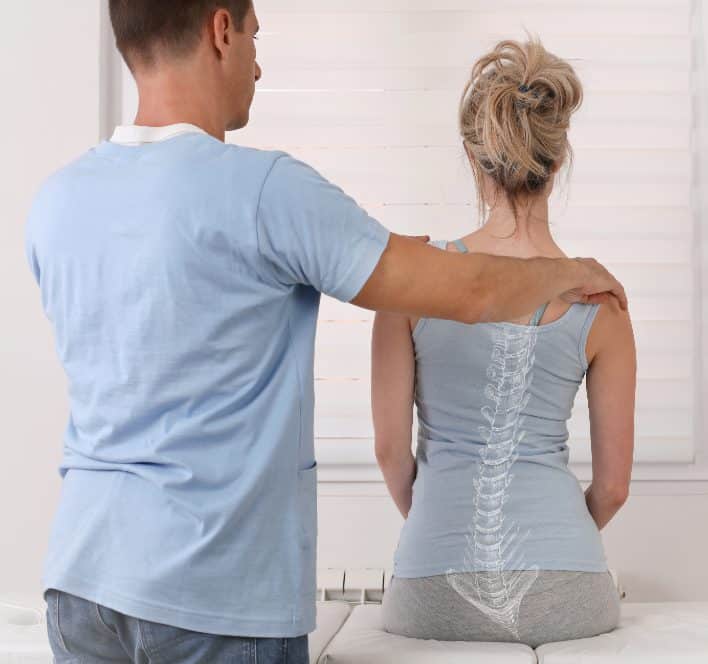Signs of scoliosis vary, depending on the individual and severity of the condition. According to the Mayo Clinic, scoliosis “is a sideways curvature of the spine that most often is diagnosed in adolescents.” Causes of scoliosis vary and may include muscular dystrophy, spinal cord injuries, genetics, or birth defects. However, sometimes there is no apparent cause at all.
Even in mild cases, an official diagnosis can guide more effective treatment. Early intervention can help to mitigate its progression and prevent scoliosis from becoming debilitating. Treatment options vary, depending on the age of onset and extent of the spinal curvature.
Possible Signs of Scoliosis
Scoliosis signs typically manifest in adolescence but can present at any age. Five of the most common include:
Uneven Shoulders
Uneven shoulders are among the most common signs of scoliosis. When your spine curves to one side, the other side may appear higher. This difference in shoulder height may be slight in milder cases. However, even a slight difference is a good impetus to get it checked out.
Visible Spine Curve
In some instances, the curvature of the spine is obvious, especially from the side view. A visibly curved spine may present with a tilt inward at the neck and lower spin with an excessively rounded top because of the extent of the curve. A curvature of more than 45 degrees indicates a potential problem.
Constant Leaning to One Side
Scoliosis may cause you to lean to one side or another, depending on the way your spine curves. Again, if it is a mild case, leaning may be slight, but persistent. It is typically involuntary, so you may not even realize you’re doing it.
Persistent Back Pain
Persistent back pain accompanied by some of the other common signs of scoliosis necessitates a check-up with a qualified physician. Muscle spasms or chronic pain from constantly leaning to one side may be to blame for back-related discomfort. A scoliosis diagnosis can help to determine if the condition is to blame and inform an effective treatment protocol.
Uneven Waist
An uneven waist is another sign that you may need to be checked for scoliosis. In more severe cases, this unevenness may be pronounced and cause discomfort when you move around.
Possible Scoliosis Treatment Options
There are myriad treatment options for scoliosis, depending on the severity of the condition. Mild cases may simply need monitoring to ensure that the condition does not progress with age.
Moderate to severe cases may require the use of a back brace to help correct the spine or other forms of intervention to remedy the issue.
Get Checked for Scoliosis by a Back and Spine Doctor
Scoliosis may be indicated through other lesser-known signs and symptoms. The experienced back and spine doctors at NJ Spine & Orthopedic understand the complexities of scoliosis and how to best treat it. To learn more about our services or schedule a scoliosis assessment, contact us here or call (866) 272-9271.

